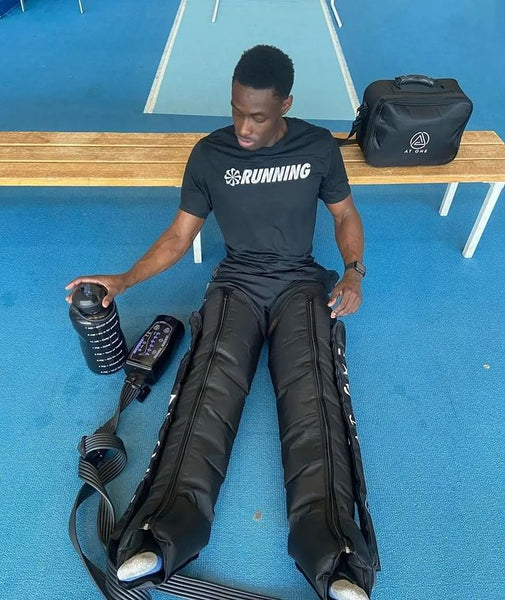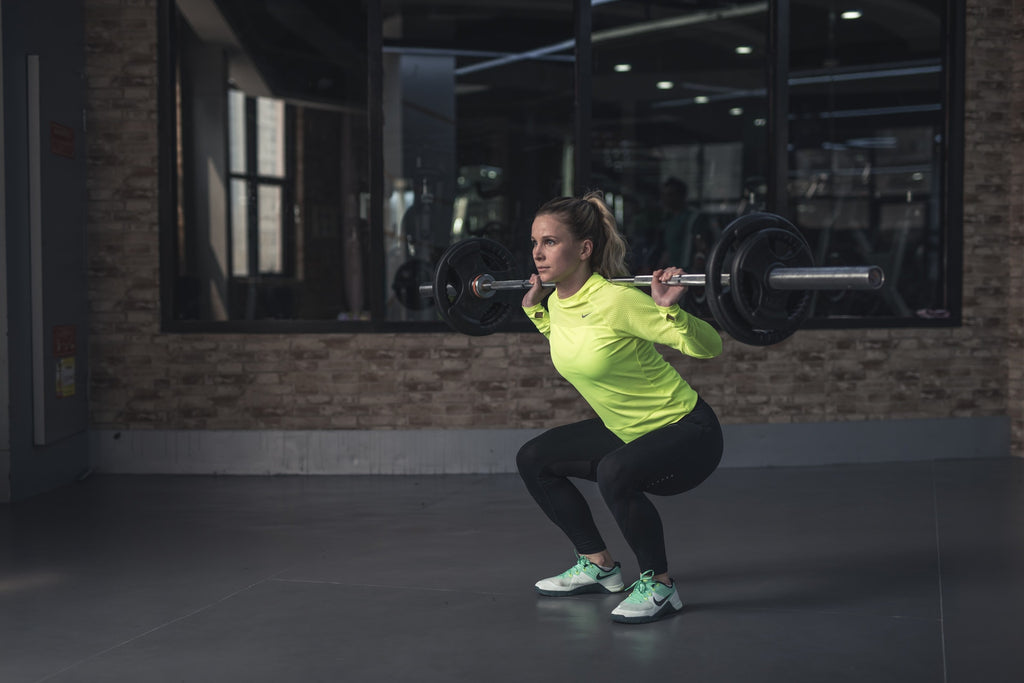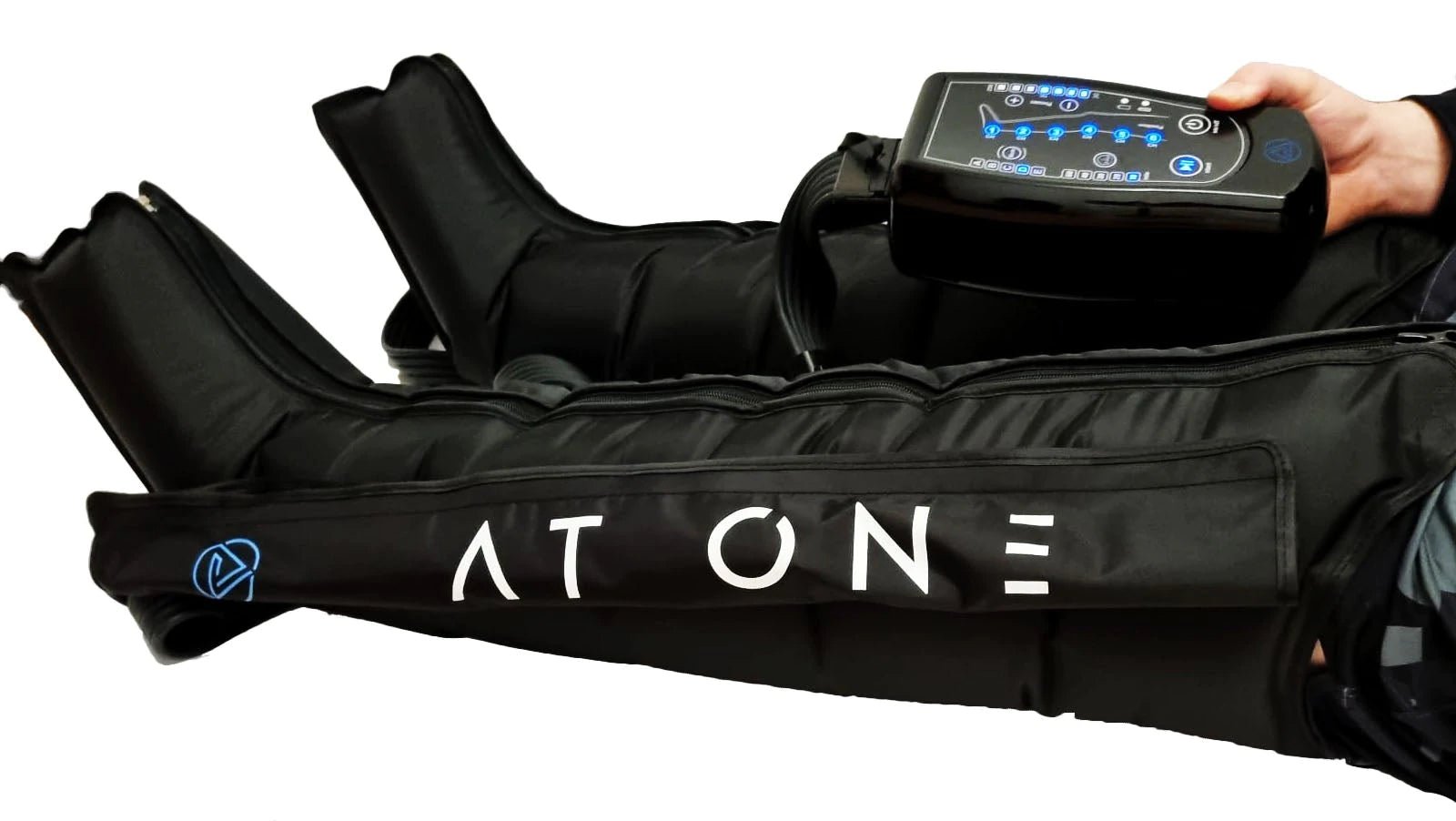How Do Compression Boots Work?
Compression boots are rapidly becoming a popular recovery tool for athletes, fitness enthusiasts, and even people recovering from surgeries. But have you ever wondered how these boots work and why they are so effective? In this blog post, we'll take a closer look at the science behind compression boots and how they can help you feel better faster.

What are Compression Boots?
Compression boots are a type of recovery gear that uses pneumatic compression to apply pressure to your legs, helping to increase blood flow and reduce inflammation. These boots usually consist of a pair of sleeves that are worn over your legs, which are then connected to a machine that pumps air into the sleeves.
What Do Compression Boots Do?
When you wear compression boots, the machine will inflate the sleeves with air, applying pressure to your legs. This pressure will then gradually decrease, allowing the blood to flow more freely and circulate throughout your legs.
A good way to picture this is to think of holding a plastic straw with a little bit of water in it. If you squeeze the bottom of the straw, the water will move up. If you were to let go, then squeeze a few inches above, the water would go with gravity back to the bottom. However, if you hold the bottom with one hand and squeeze right above it with the other, then let go with the hand on the bottom and keep squeezing up, you can force the water to move against gravity and exit out the top of the straw. This sequential compression has been demonstrated in research to work more effectively than static compression alone (such as wearing compression socks).
By increasing blood flow and reducing inflammation, compression boots can help speed up the recovery process after a workout or athletic event. They can also help relieve symptoms of chronic conditions like lymphedema and varicose veins, which can cause swelling and discomfort.
When To Use Compression Boots In Your Fitness Routine
Compression boots can be used at various points in your fitness routine to aid in recovery and improve performance. Many athletes use them after a workout to reduce muscle soreness and inflammation, but they can also be used before a workout to increase blood flow and prepare the muscles for exercise. Some people even use compression boots during a workout to improve circulation and prevent fatigue. Experiment with different timing and see what works best for you and your body.
What Are The Benefits Of Compression Boots?
Compression boots offer several benefits for athletes and fitness enthusiasts. Here are just a few of the ways compression boots can help you recover faster and perform better
Better Blood Flow: Compression therapy, including the use of compression boots, helps improve blood flow by applying gentle pressure to the legs. This can assist in moving blood back to the heart, especially when sitting or standing for long periods[1].
Prevention and Treatment of Varicose Veins: Compression stockings or boots can help reduce discomfort and swelling associated with varicose veins. They may also aid in preventing the development of new varicose veins[1].
Reduced Swelling: Compression socks or boots can prevent fluid from leaking out of small blood vessels in the legs, helping to prevent swelling when sitting or standing for extended periods[1].
Decreased Inflammation and Muscle Tension: The use of compression boots,, can help decrease inflammation and muscle tension. This can be beneficial for recovery after intense workouts or physical activity[2].
Faster Recovery Time: Compression boots can aid in reducing recovery time by improving blood circulation and reducing muscle soreness[2].
Increased Range of Motion and Flexibility: Compression therapy, including the use of compression boots, may help increase range of motion and flexibility in the legs[2].
Healing of Ulcers and Wounds: Compression therapy can assist in healing ulcers and wounds caused by poor circulation[3].
Management of Conditions: Compression therapy can be used to manage conditions such as chronic venous insufficiency and orthostatic hypotension[3].
It's important to note that while there is research supporting the benefits of compression boots, some studies involve a small number of participants. Larger and more long-term research is needed to fully establish the science behind the benefits of compression boots[4][6].
Sources:
[1] WebMD: [Benefits of Compression Therapy](https://www.webmd.com/dvt/benefits-of-compression-therapy)
[2] Digme Fitness:(https://www.digmefitness.com)
[3] Cleveland Clinic: [Compression Therapy: Types and Benefits](https://my.clevelandclinic.org/health/treatments/23449-compression-therapy)
[4] Bicycling: [The Truth About Compression Boots' Benefits](https://www.bicycling.com/training/a37809440/compression-boots-benefits/)
[6] Runner's World: [Compression Boots: The Benefits, How to Use Them](https://www.runnersworld.com/training/a34773177/compression-boots-benefits/)

Compression boots are a valuable tool for athletes and fitness enthusiasts looking to improve their performance and recover faster. By increasing blood flow, reducing inflammation, and improving range of motion, compression boots can help you feel better faster and get back to your active lifestyle with ease. If you haven't already tried compression boots, now is the perfect time to see what they can do for you!
How Many Times Per Week Can You Use Compression Boots?
To understand the optimal usage of compression boots, it's crucial to grasp the science behind their effectiveness. Compression boots are designed to provide dynamic compression to the legs, stimulating blood flow and aiding in the removal of metabolic waste. By doing so, they help reduce inflammation, minimise muscle soreness, and promote tissue repair.
While compression boots offer a range of benefits, it's important to strike the right balance to avoid overuse and potential negative effects. The ideal frequency of use depends on several factors, including individual fitness goals, training intensity, and overall recovery needs.
How To Use Compression Boots
Post-Workout Routine
For individuals engaging in intense workouts or high-impact activities, using compression boots immediately after exercise can provide significant benefits. Incorporating a session of 20-30 minutes within two hours of completing your workout can help kickstart the recovery process by flushing out metabolic byproducts and reducing inflammation. This post-workout application is particularly useful for athletes aiming to minimize muscle damage and soreness.
Active Recovery Days
On days dedicated to active recovery or low-impact workouts, including a session with compression boots can amplify the benefits of your training. By enhancing circulation and increasing nutrient delivery, compression boots can aid in the removal of lactic acid and promote muscle repair. Utilise compression boots for 20-30 minutes during these days to accelerate recovery and prepare your body for the upcoming challenges.
Intense Training Phases
During periods of intensified training or when pushing your physical limits, increasing the frequency of compression boot sessions can be advantageous. By incorporating 2-3 sessions per day, ranging from 15 to 30 minutes each, you can enhance blood flow, reduce muscle stiffness, and combat the cumulative effects of demanding workouts. However, it's essential to listen to your body and ensure you're not overtaxing your muscles or causing discomfort.
Individual Considerations
Every individual's recovery needs are unique, and the frequency of compression boot usage should be tailored accordingly. Factors such as age, fitness level, and underlying medical conditions should be taken into account when determining the appropriate usage pattern. Consulting with a healthcare professional or sports therapist can provide valuable insights and guidance for finding the optimal routine.
What Does The Science Say?
Let’s begin by examining a few different meta-analyses on compression garments. The first of these meta-analyses were done on various recovery modalities, not just exclusively compression. This analysis found that compression was one of the highest-ranking forms of recovery capable of lowering DOMS (delayed onset muscle soreness) and perceived fatigue. Compression ranked just below massage and alongside water immersion. Two further and separate meta-analyses looking exclusively at compression garments found that compression is effective at expediting muscle strength and power return, following exercise.
Moving onto singular studies, one group of researchers, when comparing compression devices to other forms of recovery, showed that compression appears to lower blood lactate levels in a much more significant manner than that of passive recovery, while active recovery produced the same results.
An even more potentially significant study tested participants utilising HIIT (high-intensity interval training) alongside an Intermittent pneumatic compression device similar to ours. What did researchers find? Interestingly, their results concluded that pneumatic compression prevented the breakdown of skeletal muscle proteins, something that is very valuable for eliminating negative workout responses.
Further, a related study found that pneumatic compression used following resistance exercise reduced skeletal muscle oxidative stress, a marker of muscle protein breakdown. In addition, some studies have not only found that compression prevents protein breakdown, but that on the contrary, it up-regulates protein synthesis and gene expression, two human body mechanisms that promote muscle growth.
Tips For Choosing The Right Compression Boots
When it comes to choosing the right compression boots for your needs, there are a few key factors to consider. First, think about the level of compression you need. Some boots offer more intense pressure than others, so it's important to choose a level that feels comfortable for you. You should also consider the size and fit of the boots, as well as any additional features like heat therapy or vibration. Finally, make sure to read reviews and do your research to find a high-quality pair of boots that will last.
For more info check 7 Things To Consider When Buying Compression Boots
Where To Buy Compression Recovery Boots?
Here at the At One Store we offer premium quality, high spec compression boots with a choice of length inseams and widths to fit any athlete. Shop the At One Air Compression Recovery Boots.
Keep on reading for links to studies

External Pneumatic Compression
EPC mitigated a reduction in flexibility and PPT that occurred with sham. Moreover, EPC reduced select skeletal muscle oxidative stress and proteolysis markers during recovery from heavy resistance exercise.

Intermittent Pneumatic Compression
This mechanistic study showed that IPC increases limb muscle StO2 compared to no compression within 10 minutes, especially with the multiple-chamber sequential compression.

Enhanced Pain Threshold
PPDC is a promising means of accelerating and enhancing recovery after the normal aggressive training that occurs in Olympic and aspiring Olympic.

Metabolism & Vascular Improvements
A single bout of EPC transiently upregulates PGC-1α mRNA, while also upregulating endothelial nitric oxide synthase protein and nitric oxide metabolite concentrations in vastus lateralis biopsy samples.

